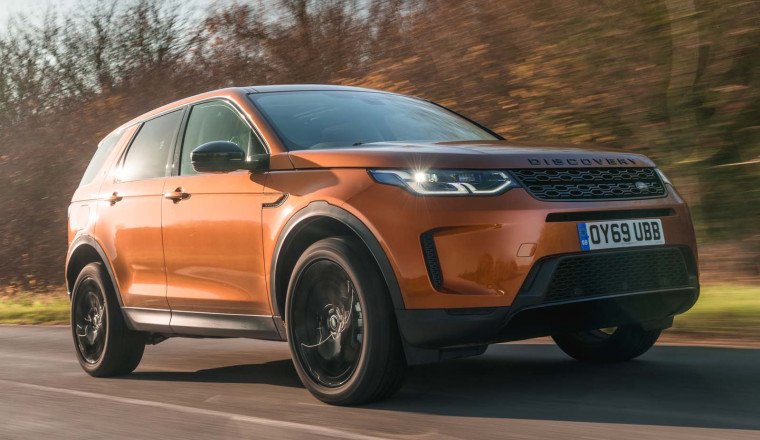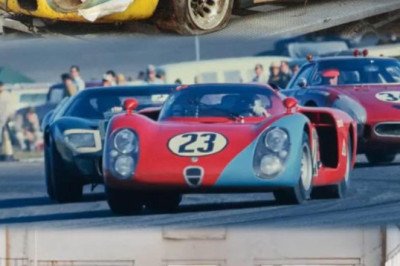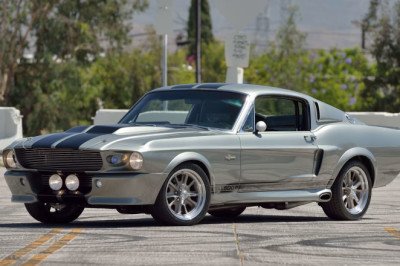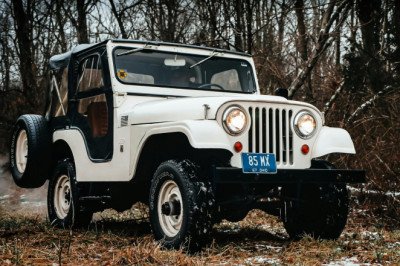
You could spend £25,000 on a brand-new Dacia Bigster to fill the role as your main family wagon – or you could save almost £20,000 and buy a desirable, spacious and comfortable same-sized Land Rover instead.
Launched in late 2014 as the successor to the Freelander, the Discovery Sport was pitched as a leisure-focused seven-seater to spearhead a whole new family of Discovery models.
Discovery Sport's range starts at £31,095 for an SE manual, climbing to £46,510 for the HSE Dynamic Lux with the nine-speed autoSteve CropleyEditor-in-chief
Despite its relatively short (for a Land Rover) length of 4.6 metres, it’s surprisingly roomy inside and offers excellent flexibility.
Access to the third row is a bit of a challenge, though, and while the individual seats are comfortable, they’re best suited to children: you can slide the middle seats forward to boost leg room back there, but it’s a marginal gain and your middle-row passengers won’t thank you.
With the rear perches folded, though, there’s a cavernous 897-litre boot, which can swallow pushchairs, shopping and much more besides, leaving ample room for adults in the middle row.
Front passengers are well catered for, too: the seating position is archetypal Land Rover, so commanding and comfortable, material quality is good and the cliff-face dash, which features plenty of physical controls, gives it a premium feel.
The infotainment screen is a bit small on early cars, so if tech is a sticking point then a post-2019 facelift car will appeal more. It has a bigger, 10in screen, and while the menu icons are a bit small, you can pair your smartphone with it to use apps such as Waze and Spotify.
You will pay closer to £14,000 for a facelifted model, but it’s worth the extra for the additional refinement and improved driving characteristics enabled by its move to a new platform – and it opens up a broader choice of engines.
Early Discovery Sports were only offered with the dated yet reliable 188bhp 2.2-litre diesel, while cars made between 2015 and 2019 came with a choice of three oil-burners: the 148bhp eD4, 178bhp TD4 and 237bhp SD4.
The TD4 balances economy and performance, but you will want the SD4 if you’re regularly towing a caravan. Be careful with the 2.0-litre Ingenium diesels, though – they aren’t known for their reliability (see right).
You could opt for a petrol instead. The turbocharged four-cylinder Si4 was offered with either 237bhp or 287bhp; they are potent but will sting you with regular stops at the pumps.
The big mid-life update brought mild-hybrid assistance and a number of styling revisions. Outputs for the petrol engines range from 197bhp to 246bhp, and from 148bhp to 237bhp for the diesels – although the entry-level 148bhp diesel goes without the hybrid tech.
Those looking to swerve a hefty BIK tax bill might be tempted by the P300e plug-in hybrid, which has an electric range of 43 miles and a meaty 305bhp to play with, which still sounds competitive even today.
The junior Discovery handles pretty well, the post-facelift version more so thanks to its lighter and stiffer PTA platform. It’s relaxed and composed and flows nicely down a country road.
Of course, its tall body likes to lean away from corners, and that prevents the car from challenging its more sporting rivals, but it rides comfortably, albeit with a bit less refinement around town where potholes can disturb things.
Pleasingly, the Discovery Sport retains its off-roading roots, too, with the brilliant Terrain Response system allowing the car to stray comfortably from the beaten track.
It is something the Sport’s closest rivals simply cannot do, and strengthens its claim to the position of best all-rounder in this segment.
The Discovery Sport doesn't have the best reliabilty record. In What Car?'s reliabilty survery, it finished 10th out of 12 cars in the seven-seater class, with an overall score of 84.1%.
Most of the issues that affect the Discovery Sport are well-known and repairable. While you might be drawn into taking your car to a main dealership to be repaired should it break down, there are plenty of reputable Land Rover specialists around that will be able to solve any issues.
Engine: Reduced engine performance, increased oil consumption and a strong smell of fuel are all signs of oil dilution. It occurs when the DPF injects too much fuel during regen cycles, causing unburned diesel to seep into the sump. This reduces the lubrication inside the engine, which in turn damages key components.DPF systems can also become blocked when regeneration cycles aren’t completed, flagging a red warning light.
Exhaust gas recirculation valves can get blocked by carbon deposits, which cause excessive smoke and a loss of power. Replacements are expensive.
Timing chain in the Ingenium diesel engine can stretch, and if left too long it will snap and cause irreparable damage. Listen for rattling and act if necessary.
A siren-like noise or blue smoke from the exhaust could be a sign of turbocharger failure. A replacement can cost between £1500 and £2000.
Gearbox: Any jerkiness from the automatic gearbox, delayed engagement of gears or shuddering at low engine revs could point to an issue with the transmission sensor or its wiring harness.
Body: The underside of a Discovery Sport might have seen the odd rough track or muddy field, so check it for damage.
Interior: Cast an eye over the cabin for scuffs and loose bits of trim. The rear seats are particularly prone to wear if child seats have been installed.
Rick Hughes: “My first Discovery Sport was a 2021 D200, bought specifically for towing. It was comfortable, cruised well and towed well, despite being expensive on fuel. I had two breakdowns, both for a charging system failure caused by a snapped alternator belt and failed tensioner. I needed a new door mirror: JLR wanted £1200, so I went to an independent specialist and paid £540 for the same part.
“I replaced that car in January this year with a low-mileage 2024 D200, but its warranty runs out soon and I’d pay £1500 for one from Land Rover. Insurance costs are very high, too.”
The Discovery Sport got an update in 2023, gaining a new infotainment set-up and styling tweaks. It comes in D165, D200 and petrol plug-in hybrid forms.
There are several trims to choose from. Consider SE Tech, which gets sat-nav, parking sensors and an electric tailgate, or HSE, which has a Meridian sound system, rear-view camera, panoramic roof and leather trim.
You could have a Disco Sport with a six-speed manual, but the nine-speed auto is more refined.
The Discovery Sport's shift to a new platform in 2019 was spurred on by the need to ensure the model could accommodate its range of electrified powertrains.
Just like the Evoque, the junior Discovery adopted JLR’s Premium Transverse Architecture (PTA), with motive power coming from a range of 2.0-litre four-cylinder Ingenium petrol and diesel engines.
Being a conservative facelift styling-wise, the new Discovery Sport maintained its distinctive C-pillar, the styling of which was inspired by that of its full-sized Discovery sibling.Matt SaundersRoad test editor
The vast majority of those power plants featured 48V mild-hybrid architecture, while a ‘driveline disconnect ’ feature helped to further improve efficiency. Outputs ranged from 148bhp to 237bhp for the diesels, and from 197bhp to 246bhp for the petrols, but it was only the entry-level 148bhp diesel that was offered without the 48V system.
In 148bhp guise, not only was it the only RDE2-certified Discovery Sport in the range, but it was the most efficient, too.
This was largely down to the fact that it eschewed four-wheel drive – and the ninespeed ZF automatic transmission with which those models came equipped – in favour of front-wheel drive and a manual gearbox.
That it was the only Discovery Sport in the UK that didn't feature a seven-seat layout surely helped, too. That said, its title as eco champion of the line-up was eventually usurped by the three-cylinder plug-in hybrid, which arrived soon after the facelifted model launched.
Our SE-specification test car, meanwhile, made use of the midrange diesel engine, which developed 177bhp and 317lb ft. It was rated to tow up to 2.2 tonnes.
In addition to its ability to house the mild-hybrid powertrain options, the PTA underpinning’s renewed, lightened, mixed-metal construction contributed to an improvement in body rigidity. Thanks to its rigidly mounted subframes, improvements were also made to noise vibration and harshness levels.
Suspension was by way of MacPherson struts at the front with a multi-link set-up at the rear, while coil springs made for a fixed ride height. Adaptive dampers were available as an optional extra.
As before, Land Rover’s Terrain Response off-road program focused on adjusting the Discovery Sport’s electronic stability systems, but being a Land Rover the model was nonetheless capable of travelling farther off the beaten track than any of its immediate rivals.
Brake-based torque vectoring at the rear axle helped out in this respect too, while making for tidier handling manners on the road.
Playing the less opulent but still appreciably premium fiddle alongside the Range Rover Evoque in the family SUV class had always left the Discovery Sport with a precarious path to tread.
Too luxurious and the more spacious model would cannibalise sales of its profitable sibling; not luxurious enough and less capable but materially plush rivals such as the BMW X3 and Audi Q5 beckoned.
It was a relief, then, to find that Land Rover had judged its cabin well. The hallmarks of the brand – comfortable chairs with a high hip-point, a simple, sizeable steering rim and utilitarian rubberised mouldings – were all still present.
The digital instrumentation array made for a newly sophisticated ambience. Higher trim levels, including our SE-spec test car, were fitted with digital instruments in place of oldworld dials, and standard across the range was the same 10in infotainment display from the Evoque and Land Rover’s rotary climate controls, which were both sleek and intuitive.
The cabin felt as hard-wearing as befitting of the Land Rover badge, but not unduly so. And that was despite the occasional hard plastic and overall panel fit which was inferior to that of Audi or BMW (but level with Volvo).
The Discovery Sport really hit its stride with its practicality. Head room was generous even with the optional panoramic roof, and the second-row bench could slide backwards to create far more leg room than the average passenger would ever need.
Uniquely among the premium cars in this class, a third row of seats was also available on all but the lowliest D150 model. It gave the car an added layer of versatility, even if it was only children who would find them comfortable over any distance.
A long with good storage – there were generous door bins and various other cubbies, plus a decently capacious boot – the Discovery Sport felt very much the archetypal multi-tool car, albeit one with no small sense of occasion.
The first-generation Discovery Sport rather fell on its face when it came to performance, using a Ford-derived diesel that was, as we wrote at the time, “shadowed everything the car does with the clatter and gunsmoke odour of yesteryear”.
Matters improved somewhat with the introduction of JLR’s downsized Ingenium diesel part-way through the model cycle, but even these EU6-compliant engines were no match for their smoother rival counterparts, generally of German origin.
Only the most wistful thinker would expect the addition of mild-hybrid technology to have had a transformative effect on the Ingenium’s performance, and in the world of 2.0-litre turbodiesel premium off-roaders, the Discovery Sport was rather staid.
With four-wheel drive, it never struggled for traction, even on damp roads, but against a kerb weight flirting with two tonnes, the D180’s 0-60mph time still slipped to the wrong side of the 10-second mark.
Neither was the car especially quick to respond to throttle inputs once rolling, although it was unlikely that anybody paying for a family SUV with genuine off-road ability would find progress so lazy as to be frustrating.
The D180 moved well while in the meat of its torque band between 1500 and 3000rpm, although the busy nine-speed gearbox could take its time to find the right ratio, so overtakes executed at short notice were best avoided.
The transmission software needed to continually change gear as a consequences at low speeds, too, when downshifts were occasionally accompanied by a small but nonetheless noticeable shunt through the driveline.
Overall, if there was any meaningful performance benefit from the supposed ‘torque-fill’ of the powertrain’s electric element, our testers failed to notice it, and this ponderous D180 still lacked the drivability of the equivalent BMW X3 20d or Volvo XC40 D4.
The old Discovery Sport handled well despite its agrarian underpinnings, and the facelifted version with updated platfrom was better still.
And yet this car didn't drive in the alert-steering, low-roll, slightly artificial manner of so many nouveau off-roading crossovers, but in a laid-back manner recognisably and enjoyably Land Rover in feel.
The Discovery Sport can be threaded along with the kind of linear delicacy rarely accorded to hatches, let alone SUVsSteve CropleyEditor-in-chief
It started with the leisurely geared steering, which ensured the Discovery Sport would never be considered among the most agile cars of its type but lends proceedings a level of composure and, for the want of a better word, class.
As with other products in the JLR stable, there was an elasticity to the motion that was married with good linearity. The result was a steering set-up that suited the heavy, high-riding Discovery Sport. It never tried to disguise its physics but still bred confidence.
As expected, body control was relaxed, although not to the extent that the Discovery Sport felt uncontrolled down a B-road. In fact, Land Rover deserved recognition for its tuning of the suspension, because the car’s rate of roll was well-judged and seamlessly matched to the steering response.
It all made for a pleasant, easy experience as the Sport flowed along – so long as you didn't stray too far from the stately pace it demanded.
Grip levels were well matched to the ability of the chassis, and the overall driving experience was defined by its dynamic coherence and surprising polish in the controls.
You could tell within 50 yards that the Discovery Sport was not designed solely with endless ribbons of smooth Tarmac in mind.
Even at speed there were edges to its ride, and this chassis picked out ripples and ridges more enthusiastically than any of the junior Land Rover’s premium rivals. A jostle here and a thud there was the price paid for genuine off-road ability.
But equally, for a car with 600mm of wading depth and class-leading approach, breakover and departure angles, the Discovery Sport was still unusually well mannered.
Vertical movements were supple but generally stopped short of any hint of bounce. The car operated slickly at a cruise, too, its fluid primary ride doing more for the everyday cause than the low-profile tyres on a more sporting alternative might have managed.
However, acoustic isolation was where the greatest improvements had been made. Ninth gear dropped motorway engine speeds to a slither above tickover and all but silenced the powertrain, and developments for the platform had seemingly banished a good degree of vibrat ion and tyre roar.
The Discovery Sport didn't operate with quite the chapell ike calm of an Audi Q5 but neither was it comprehensively outclassed by the best in this segment.
Then there was the fact that no rival offered such a commanding driving position, which was equal even to the Porsche Cayenne in terms of height from the ground.
This contributed to a feeling of security and wellbeing that was, much like the driving controls, unmistakably Land Rover.
Discovery Sport prices now start from as low as £6000, but that will only buy you an early diesel, likely a mid-rung TD4. Most are well used and have plenty of miles on the clock.
Diesel dominates around the £11,000-£16,000 mark, but mileages are more reasonable and you wil easily find a car with a few owners or a full service history.
Post-facelift examples start from around £15,000, with newer petrol and PHEV models available.
Regardless of age and trim, that seems like pretty good value for money for an upmarket seven-seat SUV with rich levels of standard kit and genuine go-anywhere capability.
That said, the Land Rover, even in diesel form, is thirstier than say, a BMW X3. You'll likely get around 38mpg day to day from a mid-rung diesel.
Premium, practial and refined, the Discovery Sport had all the hallmarks of a good family SUV.
But even with its new-found mild-hybrid engines and updated platform, its rivals offered more comfort, pace and efficiency.
The Discovery Sport is another convincing Land Rover with lots of handling finesse, style and capabilityMatt PriorEditor-at-large
And despite the convincing technological showcase of the cabin, at times the Sport’s weight and thick-set manner would make it feel a touch antiquated among more polished classmates.
However, few if any of those cars could match the Land Rover’s off-road ability or sense of integrity, and none married such a commanding driving position with controls that inspired an enjoyable degree of confidence.
In those aspects the Discovery Sport transcended the norms of the class and inherited the character of more senior Land Rover wares.
While the Discovery Sport could match the likes of Audi Q5 and BMW X3 for rolling refinement, its abilities in this regard were not so far off the pace that the versatility of its capacious, thoughtfully appointed interior couldn’t give this entry-level Land Rover an edge in the minds of potential owners.
Sam joined the Autocar team in summer 2024 and has been a contributor since 2021. He is tasked with writing used reviews and first drives as well as updating top 10s and evergreen content on the Autocar website.
He previously led sister-title Move Electric, which covers the entire spectrum of electric vehicles, from cars to boats – and even trucks. He is an expert in new car news, used cars, electric cars, microbility, classic cars and motorsport.
Sam graduated from Nottingham Trent University in 2021 with a BA in Journalism. In his final year he produced an in-depth feature on the automotive industry’s transition to electric cars and interviewed a number of leading experts to assess our readiness for the impending ban on the sale of petrol and diesel cars.















Facebook Conversations